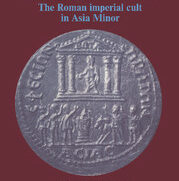A reader of the previous Revelation post commented,
But at first glance, Emperor worship seems a pretty minor issue compared to the other shit that was going down in that period.

Agreed — “at first glance”. Why would the Book of Revelation make such ado over a cult that had been part and parcel of everyday life throughout the empire since the days of Augustus? Surely Christians could just stay at home or hide themselves behind the latrines when the day came for the city officials to offer their cultic devotions to the emperor. But is there evidence that something about emperor worship changed in a major way at a relevant time?
From the discussion that I outlined earlier Thomas Witulski raises the following question:
- When, specifically, in the Roman province of Asia and between 45/50 and 155/160 CE, can we find a massive intensification of cultic-religious emperor worship accompanied by the propagation of the emperor’s divine salvation role?
Emperor worship was introduced into the province of Asia during the principate of Augustus between 30 and 10 CE. Witulski takes the extent and practices of Augustan worship as the yardstick by which to measure subsequent forms of the cult. After Augustus the emperor cult remained fairly much the same for most of the period up to the early years of the second century. During the time of Vespasian (69-79 CE) and his son Titus (79-81 CE) there even appears to have been a waning of the frequency and magnitude of the cult practices associated with emperor worship. Domitian (81-96 CE) took some steps to revive it but he did so by instituting it as the cult of the ruling Flavian family, not that of a sole emperor. This Flavian cult, Witulski notes, did not give rise to any “new cultic-religious situation for the inhabitants of the province of Asia as a whole.” It was confined to Ephesus.
In view of Domitian’s reign, there can be no question of a significant intensification of the cultic-religious veneration of the reigning regent and of his accompanying inappropriate deification in the Roman province of Asia. (Witulski, p. 135, – translation)
Trajan (98-117 CE) established a provincial cult of Zeus Philios in the city of Pergamon with himself, the emperor, to be worshiped alongside Zeus. The intention was to establish a cult in the province of Asia that was peer to Rome’s cult of Dea Roma and Divi filius Augustus. An inscription informs us that Trajan was propagandizing himself as a “new Augustus”. There is no evidence that there was any wider magnification of the cult of emperor worship in the province.
So in the opening years of the second century we find Trajan presenting himself as an equal of Augustus but the emperor cult does not go beyond anything that Augustus himself had inaugurated over a century before.
In view of this and in view of the fact that the cultic-religious veneration of the Roman emperors belonged to the everyday life of the inhabitants in the province of Asia on the provincial, but especially also on the municipal and private level, it is difficult to claim that with the inauguration of the cult of Ζεύς Φίλιος and Trajan in Pergamon a fundamentally new cultic-religious situation arose for those inhabitants of Asia who did not live in Pergamon. (p. 136 – translation)
With Hadrian, everything changes. Continue reading “Emperor Worship and the Book of Revelation”
